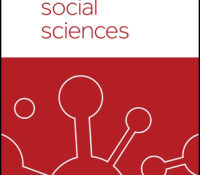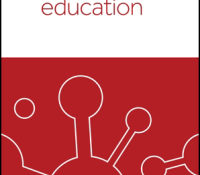eric.ed.gov har udgivet: This report is a continuation of a study conducted at the University of Wisconsin during the spring of 1967. The previous study, Technical Report #38, succeeded in teaching conservation of numerousness to small groups of kindergarten children, in a middle-class community. The purpose of the present study was to determine if the typical classroom teacher, in schools differing in socio-economic levels, could successfully use the lessons developed in the previous study to effect conservation of numerousness with kindergarten children. Four questions were considered – (1) can the typical classroom teacher teach the conservation lessons as successfully as a specially trained expert, (2) is the treatment of greater value for pupils from disadvantaged backgrounds, (3) is the treatment of greater value for younger kindergarten children than for older… Continue Reading →
Like this:
Like Loading...
eric.ed.gov har udgivet: This is the second in a series of briefs summarizing findings from the newest and most rigorous research related to racial and socioeconomic diversity in public schools. The studies on which this brief is based were published recently in three special issues of the peer-reviewed journal, “Teachers College Record,” edited by Professors Roslyn Arlin Mickelson of the University of North Carolina at Charlotte and Kathryn Borman of the University of South Florida. This brief considers the relationship between the racial and socioeconomic composition of a school and/or classroom and a variety of important educational measures. This research augments an already extensive body of work in this area, which has reached similar conclusions. However, the work published this year in “Teachers College Record” is particularly rigorous. It draws… Continue Reading →
Like this:
Like Loading...
tandfonline.com har udgivet en rapport under søgningen “Teacher Education Mathematics”: Abstract Abstract When in 2014 the STEM Career Interest Survey (STEM-CIS) was developed, the researchers could check this instrument with other target audiences. Also, the question remained if the instrument was applicable for both boys and girls. This article describes the development and validation of a Dutch language version of it, called the STEM-LIT instrument, an instrument to measure the interest of children aged between ten and 12 years in Science, Technology, Engineering and Mathematics (STEM), focusing specifically on children from families with low socio-economic status (SES). The instrument has been adapted and developed in five stages and tested among Dutch primary school pupils in groups seven and eight (ages 10–11 and 11–12). The instrument was first tested in two… Continue Reading →
Like this:
Like Loading...

tandfonline.com har udgivet en rapport under søgningen “Teacher Education Mathematics”: Abstract Abstract The importance of population-based scaling of the socioeconomic characteristics of cities has been regularly demonstrated over the past decade. Disproportionate population-based agglomeration of socioeconomic properties relative to one another are, therefore, common characteristics of cities. In other words, socioeconomic characteristic increase or decrease non-linearly and disproportionately as the population of cities increase or decrease. Whether this is also the case in regions with urban and rural populations has not yet been examined. This contribution uses small Alabama counties (fewer than 120,000 residents) in a case study to examine the orderliness of eleven different demographic, socioeconomic and entrepreneurial characteristics: (i) the numbers of residents, enterprises, employees, highly educated people, poor people and households, and, (ii) the magnitudes of enterprise… Continue Reading →
Like this:
Like Loading...
eric.ed.gov har udgivet: Science, Technology, Engineering and Maths education (STEM Education) is presented as a way to reduce marginalisation and promote inclusion in developing countries. This qualitative study aims to identify ways of reducing marginality and promoting inclusion through dialogic and transformative learning by high school teachers of the New Harvest School (NHS), particularly in STEM Education. Method: The study was carried out within the framework of the critical social approach identifying four characteristics of dialogism. The data comprised ethnographic observations of classes, and interviews with the selected teachers, the vice-chancellor and the administrator of the institution. Results: The dialogic characteristics of sequentiality, positioning, historicity and plurality were found in the science classes taught by the institution. Teachers have curricular knowledge capabilities regarding STEM education; however, recommendations were presented regarding… Continue Reading →
Like this:
Like Loading...
eric.ed.gov har udgivet: The International Association for the Evaluation of Educational Achievement’s (IEA) mission is to enhance knowledge about education systems worldwide and to provide high-quality data that will support education reform and lead to better teaching and learning in schools. In pursuit of this aim, it conducts and reports on major studies of student achievement in literacy, mathematics, science, citizenship, and digital literacy. IEA studies, most notably Trends in International Mathematics and Science Study (TIMSS), Progress in International Reading Literacy Study (PIRLS), International Civic and Citizenship Education Study (ICCS), and International Computer and Information Literacy Study (ICILS), have set the benchmark for international comparative studies in education. These well-established studies have generated vast datasets encompassing student achievement, disaggregated in a variety of ways, along with a wealth of contextual… Continue Reading →
Like this:
Like Loading...
tandfonline.com har udgivet en rapport under søgningen “Teacher Education Mathematics”: Abstract Abstract Children from some demographic groups disproportionately receive special education (SE) services. Due to methodological shortcoming in existing work, it remains unclear whether this is due to real differences in academic needs or cultural selection/bias. Hence, in a community sample of 1250 Norwegian children, we examined the role of third grade SE services, academic test scores, behavioural problems, and teacher’s level of helplessness in mediating the effect of family socio-economic status (SES) and students’ gender on fifth-grade SE services. Results revealed no direct effects of either gender or SES on fifth-grade SE, but four mediated pathways were identified: (1) Boys had a greater likelihood of receiving fifth-grade SE services when (a) they previously received SE and (b) they experienced… Continue Reading →
Like this:
Like Loading...
tandfonline.com har udgivet en rapport under søgningen “Teacher Education Mathematics”: Community perceptions of the socio-economic structural context influencing HIV and TB risk, prevention and treatment in a high prevalence area in the era of antiretroviral therapy Link til kilde
Like this:
Like Loading...



